

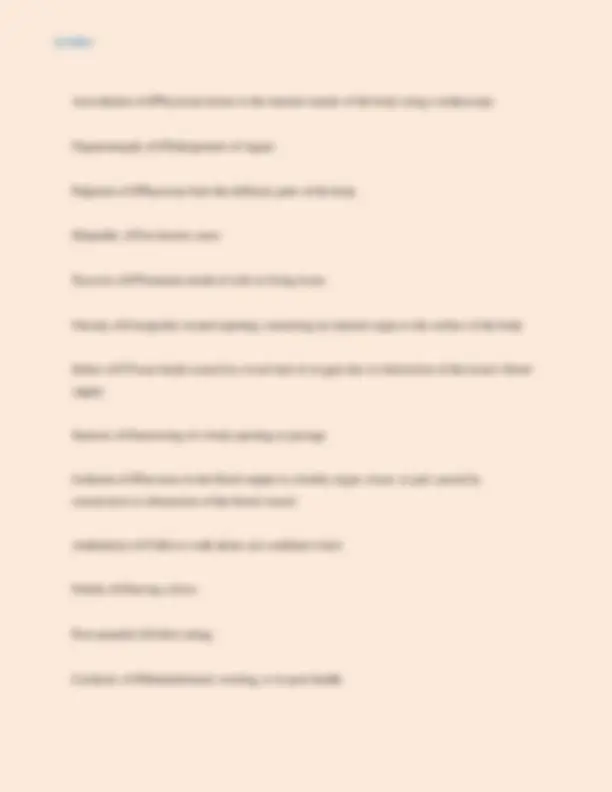
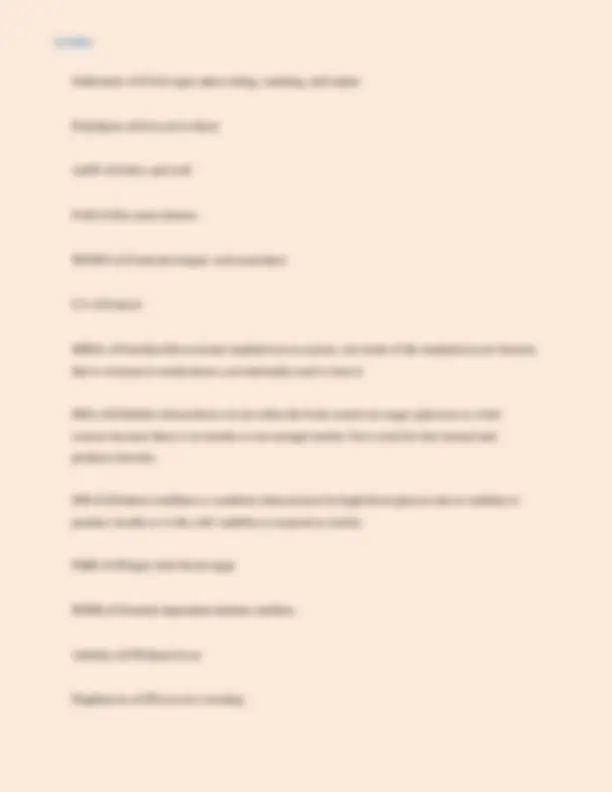


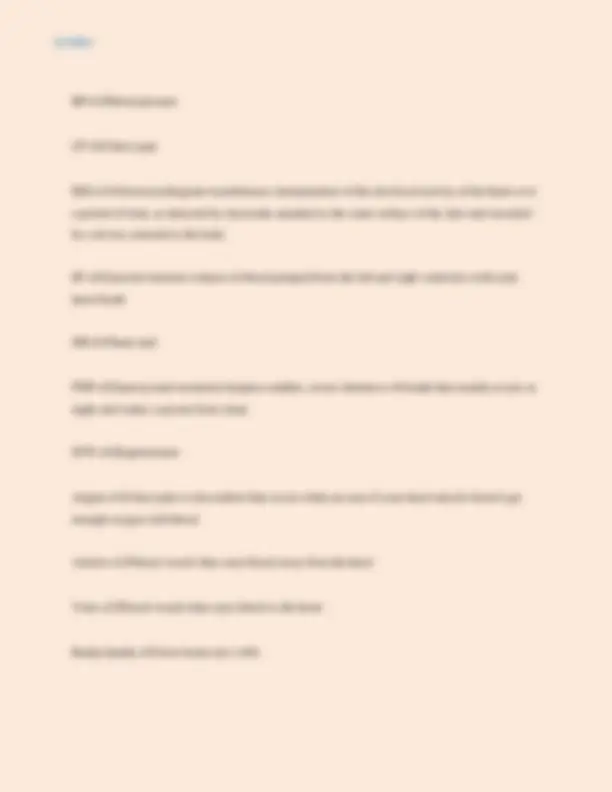
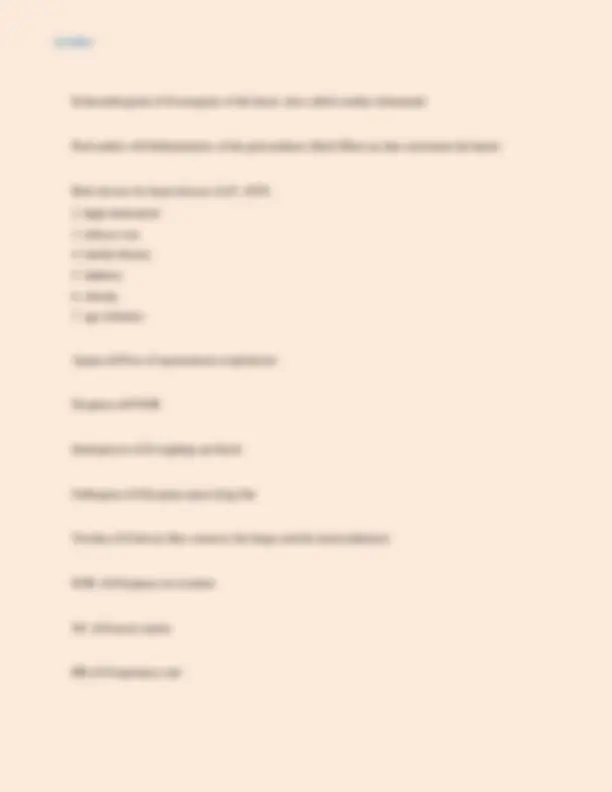
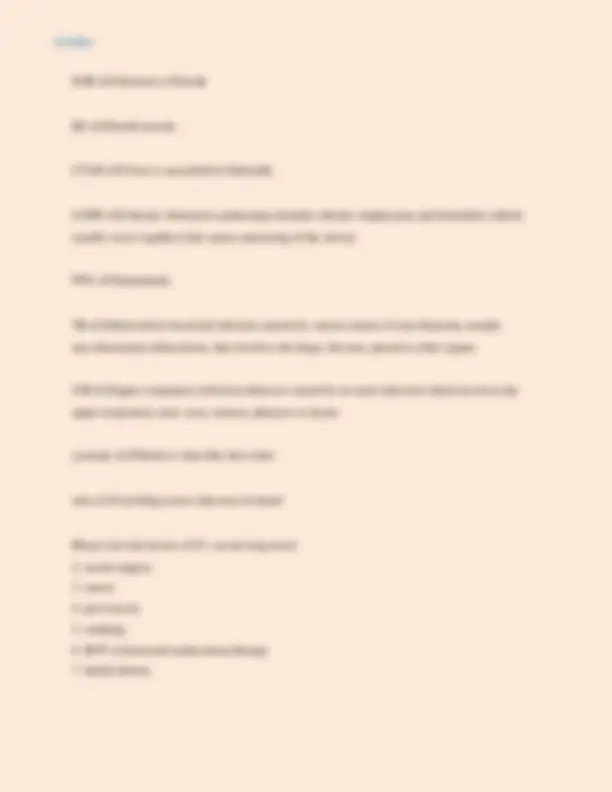
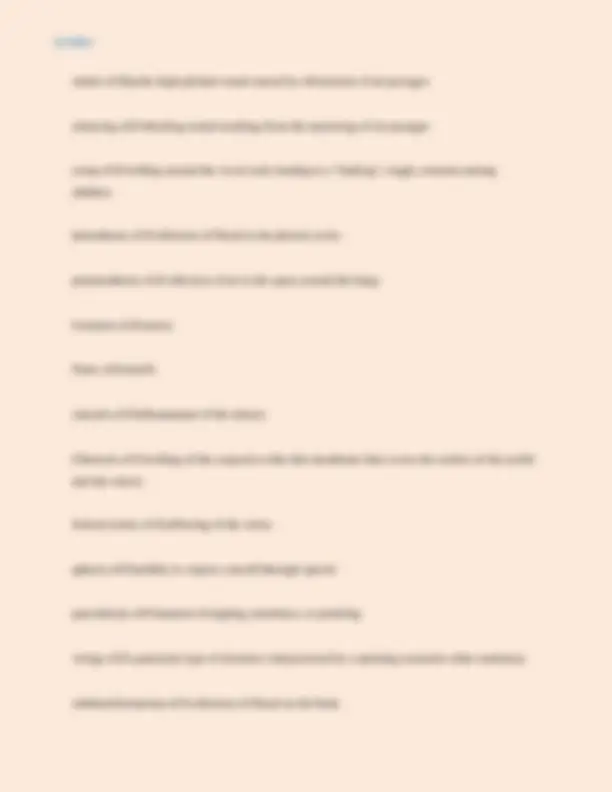
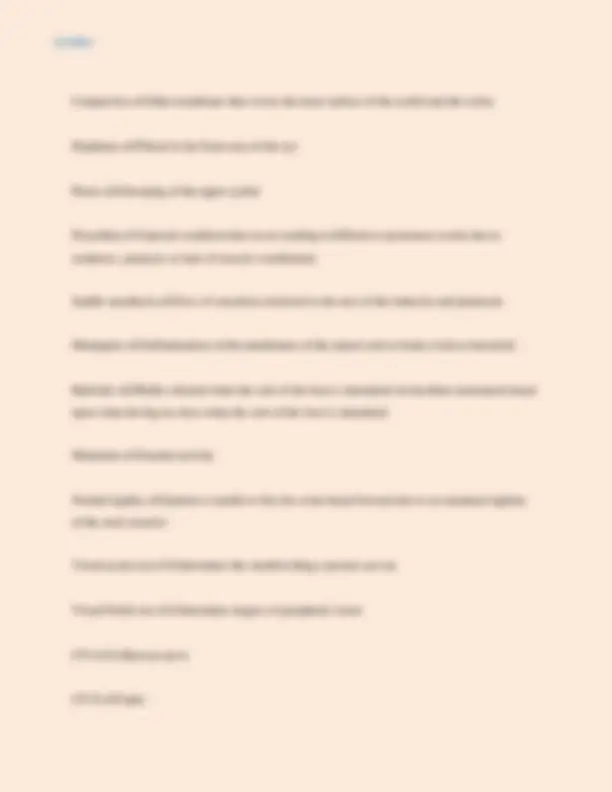

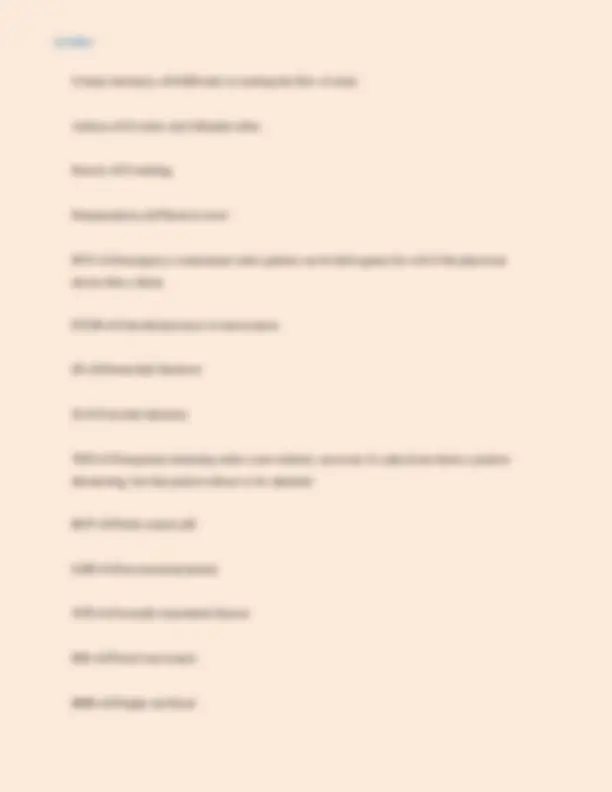
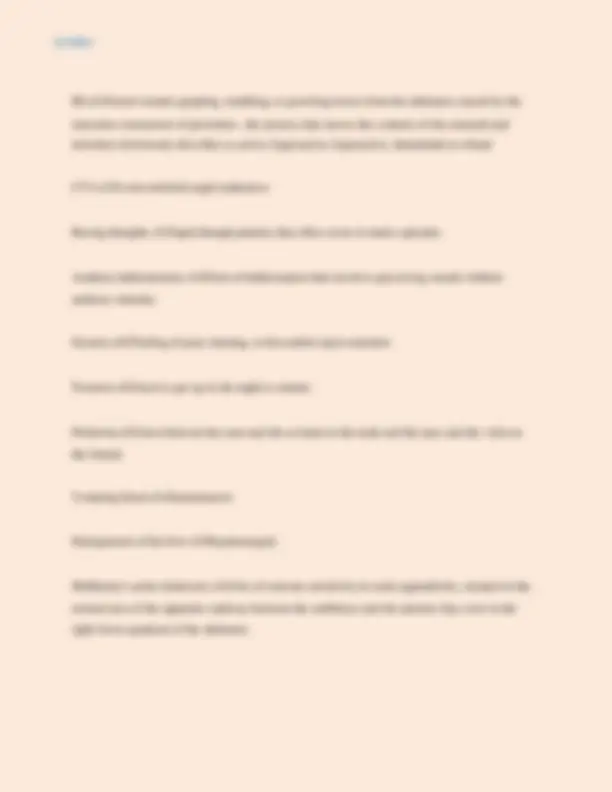
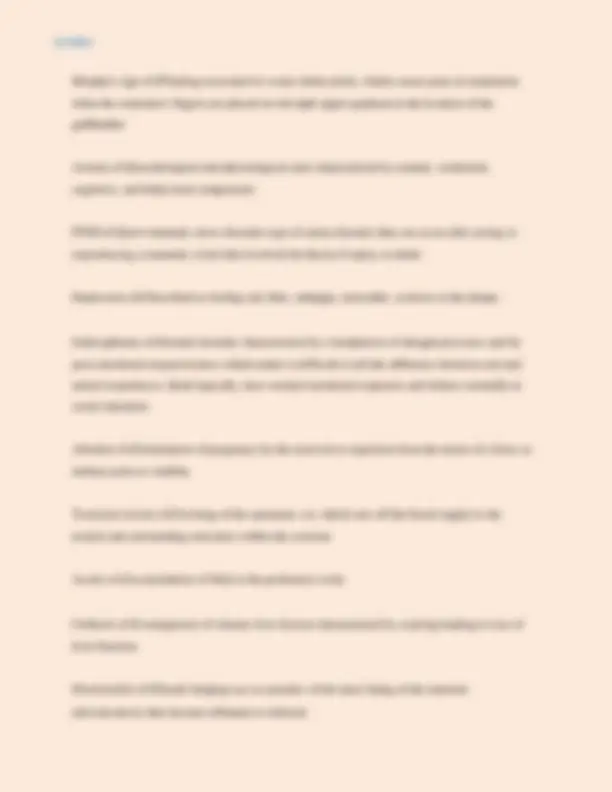
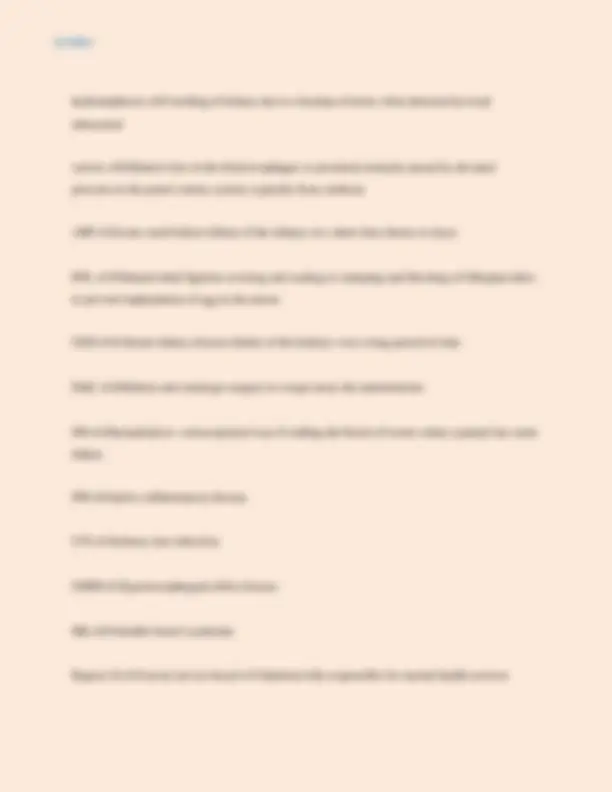
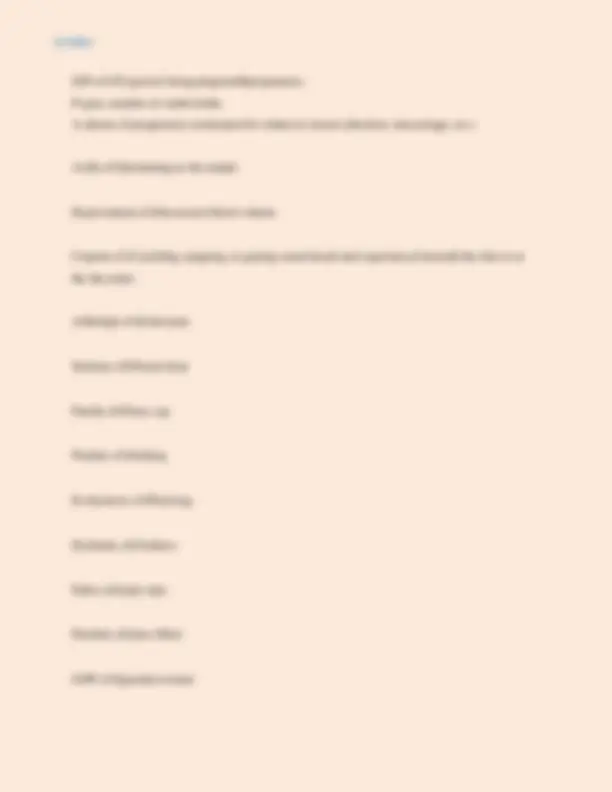
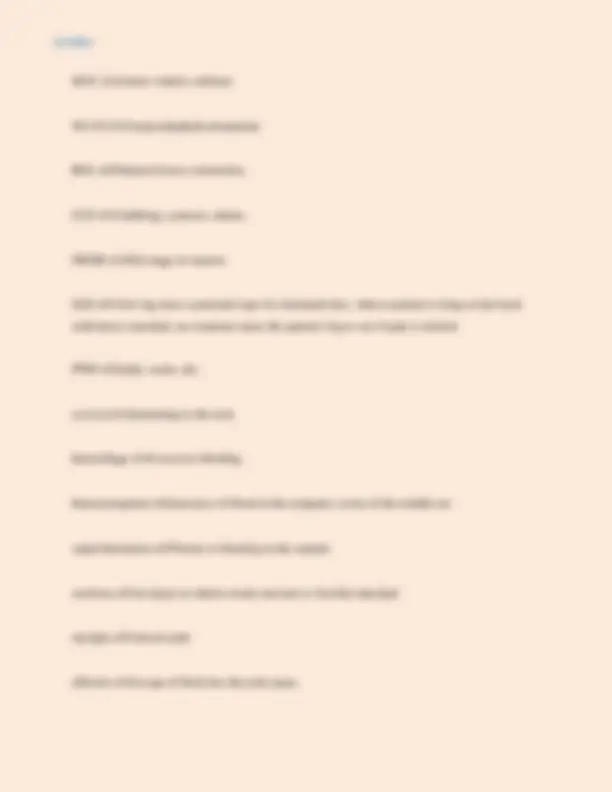
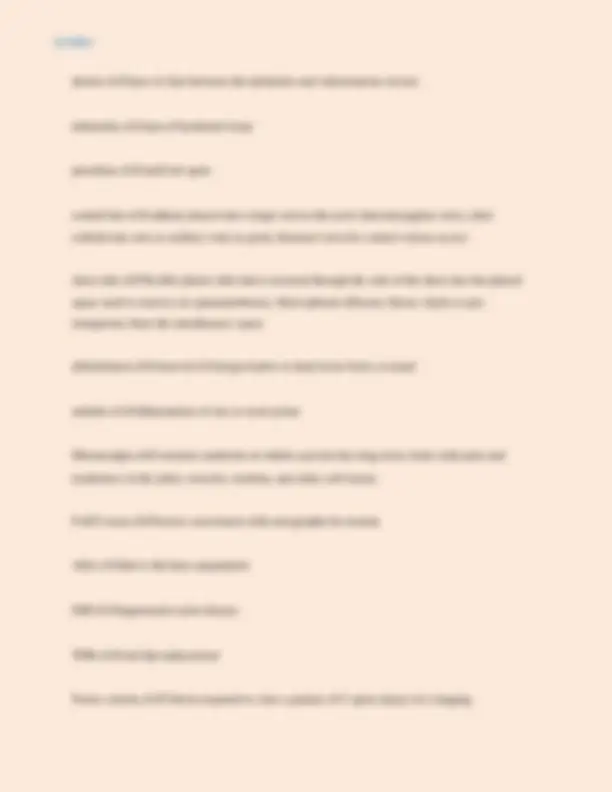



Study with the several resources on Docsity

Earn points by helping other students or get them with a premium plan


Prepare for your exams
Study with the several resources on Docsity

Earn points to download
Earn points by helping other students or get them with a premium plan
Community
Ask the community for help and clear up your study doubts
Discover the best universities in your country according to Docsity users
Free resources
Download our free guides on studying techniques, anxiety management strategies, and thesis advice from Docsity tutors
SOAP ✔✔Subjective-HPI, ROS, Past Med, Fam, and Social Hx (Patient's point of view) Objective-Physical exam, Medical Decision Making (labs, x-rays, etc.) Assessment-Diagnosis (determined by combining subjective/objective info) Plan-Disposition (Admission, Discharge, Transfer instructions) 7 Parts of the HPI ✔✔1. Context 2. Time/Duration; time = course of symptoms (improving, worsening, constant, intermittent, etc.); duration = total time symptoms have been present 3. Location 4. Quality 5. Severity 6. Modifying Factors 7. Pertinent positive and negatives Level 5 Chart ✔✔HPI: 4-7
Typology: Exams
1 / 27

This page cannot be seen from the preview
Don't miss anything!




















SOAP ✔✔Subjective-HPI, ROS, Past Med, Fam, and Social Hx (Patient's point of view) Objective-Physical exam, Medical Decision Making (labs, x-rays, etc.) Assessment-Diagnosis (determined by combining subjective/objective info) Plan-Disposition (Admission, Discharge, Transfer instructions) 7 Parts of the HPI ✔✔1. Context
Abduction ✔✔Moving away from the midline. ACLS ✔✔Advanced cardiac life support. AMA ✔✔Against medical advice. DNR ✔✔do not resuscitate DOA ✔✔Dead on arrival OSH ✔✔Outside hospital PCP ✔✔Primary care physician PTA ✔✔Prior to arrival UTD ✔✔Up to date (as in immunizations) WNL ✔✔within normal limits yo ✔✔year old B/L ✔✔bilateral D/C ✔✔discharge H&P ✔✔history & physical
Auscultation ✔✔Physician listens to the internal sounds of the body using a stethoscope Organomegaly ✔✔Enlargement of organs Palpation ✔✔Physician feels the different parts of the body Idiopathic ✔✔no known cause Necrosis ✔✔Premature death of cells in living tissue Ostomy ✔✔surgically created opening connecting an internal organ to the surface of the body Infarct ✔✔Tissue death caused by a local lack of oxygen due to obstruction of the tissue's blood supply Stenosis ✔✔narrowing of a body opening or passage Ischemia ✔✔Decrease in the blood supply to a bodily organ, tissue, or part caused by constriction or obstruction of the blood vessels Ambulatory ✔✔Able to walk about, not confined to bed Febrile ✔✔having a fever Post-prandial ✔✔after eating Cachectic ✔✔Malnutritioned, wasting, or in poor health
Orthostatic ✔✔vital signs taken sitting, standing, and supine Polydipsia ✔✔excessive thirst A&W ✔✔alive and well NAD ✔✔no acute distress WDWN ✔✔well-developed, well-nourished CA ✔✔cancer MRSA ✔✔methycillin resistant staphylococcus aureus; one strain of the staphylococcus bacteria that is resistant to medications conventionally used to treat it DKA ✔✔diabetic ketoacidosis-occurs when the body cannot use sugar (glucose) as a fuel sources because there is no insulin or not enough insulin. Fat is used for fuel instead and produces ketones. DM ✔✔diabetes mellitues-a condition characterized by high blood glucose due to inability to produce insulin or to the cells' inability to respond to insulin FSBS ✔✔finger stick blood sugar IDDM ✔✔insulin-dependent diabetes mellitus Afebrile ✔✔Without fever Diaphoresis ✔✔Excessive sweating
CMP ✔✔complete metabolic panel-BMP plus LFTs and calcium level H&H ✔✔HGB&HCT (hemoglobin and hematocrit) LFTs ✔✔liver function tests-tests the livers ability to get rid of bilirubin from the blood and to produce albumin T&S ✔✔type and screen UA ✔✔urine analysis UDS ✔✔urine drug screen IM ✔✔intramuscular IV ✔✔intravenous SQ ✔✔subcutaneous NPO ✔✔nothing by mouth PR ✔✔per rectum BID ✔✔twice a day PRN ✔✔as needed TID ✔✔three times a day
NS ✔✔normal saline Abx ✔✔antibiotics NKDA ✔✔no known drug allergies IVF ✔✔IV fluid D-Dimer ✔✔Measures fibrin split products. Non-specific test used to help rule out PE or DVT. Advair ✔✔Pulmonary Percocet ✔✔Pain control/sedation Zoloft ✔✔Psychiatric Lasix ✔✔Cardiovascular; diuretic Fentanyl ✔✔Pain control/sedation Lantus ✔✔Endocrine Atenolol ✔✔Cardiovascular; beta-blocker Zofran ✔✔Anti-emetic Penicillin ✔✔Abx
BP ✔✔blood pressure CP ✔✔chest pain EKG ✔✔electrocardiogram-transthoracic interpretation of the electrical activity of the heart over a period of time, as detected by electrodes attached to the outer surface of the skin and recorded by a device external to the body EF ✔✔ejection fraction-volume of blood pumped from the left and right ventricles with each heart beath HR ✔✔heart ratd PND ✔✔paroxysmal nocturnal dyspnea-sudden, severe shortness of breath that usually occurs at night and wakes a person from sleep HTN ✔✔hypertension Angina ✔✔chest pain or discomfort that occurs when an area of your heart muscle doesn't get enough oxygen rich blood Arteries ✔✔blood vessels that carry blood away from the heart Veins ✔✔blood vessels that carry blood to the heart Bradychardia ✔✔slow heart rate (<60)
Gallop ✔✔extra heart sound called S3 or S4 dependent upon where in the cycle this added sound comes Edema ✔✔swelling of tissue due to excess accumulation of fluid Tachycardia ✔✔fast heart rate (>100) Reproducible chest pain ✔✔Chest pain that is elicited by palpating the chest BPM ✔✔beats per minute DP pulse ✔✔dorsalis pedis pulse PT ✔✔posterior tibia pulse NSR ✔✔normal sinus rhythm JVD ✔✔jugular vein distension-bulging of veins in the neck AA ✔✔abdominal aortic aneurysm-localized dilation (ballooning) of the abdominal aorta exceeding the normal diameter by more than 50%, and is the most common form of aortic aneurysm BB ✔✔bundle branch block-refers to a defect of the heart's electrical conduction system that can be seen on an EKG CABG ✔✔coronary artery bypass graft-procedure that returns blood flow to heart by rerouting it through a new artery or vein that is grafted around diseased sections
Echocardiogram ✔✔sonogram of the heart, also called cardiac ultrasound Pericarditis ✔✔inflammation of the pericardium (fluid filled sac that surrounds the heart) Risk factors for heart disease ✔✔1. HTN
SOB ✔✔shortness of breath BS ✔✔breath sounds CTAB ✔✔clear to auscultation bilaterally COPD ✔✔chronic obstructive pulmonary disorder-chronic emphysema and bronchitis (which usually occur together) that causes narrowing of the airway PNA ✔✔pneumonia TB ✔✔tuberculosis-bacterial infection caused by various strains of mycobacteria, usually mycobacterium tuberculosis, that involves the lungs, but may spread to other organs URI ✔✔upper respiratory infection-illnesses caused by an acute infection which involves the upper respiratory tract: nose, sinuses, pharynx or larynx cyanotic ✔✔bluish or slate-like skin color rales ✔✔crackling noises that may be heard Blood clot risk factors ✔✔1. recent long travel
clonus ✔✔involuntary contraction and relaxation of the muscle, characteristic of some neurologic disorders TM ✔✔tympanic membrane-cone-shaped membrane that separates the internal ear from the middle ear; aka the ear drum MMM ✔✔moist mucous membranes EOMI ✔✔extraocular motion intact PERRL ✔✔pupils equal round reactive to light AMS ✔✔altered mental status ALOC ✔✔altered level of consciousness CVA ✔✔cerebral vascular accident-aka stroke; blood flow to a part of the brain stops; ischemic or hemorrhagic MAE ✔✔moving all extremities A&O ✔✔alert and oriented DTR's ✔✔deep tendon reflexes-reflexes elicited and measured on a scale of 0 - 5+; often patellar reflex tested (Normal: 2+ patellar reflexes) GCS ✔✔Glascow coma scale: test that assesses mental and motor function on a scale of 3 - 15 with 15 indicating the patient is functioning properly
Aphagia ✔✔inability to swallow Epistaxis ✔✔nosebleed Rhinorrhea ✔✔thin, watery discharge from the nose diplopia ✔✔double vision Flurescein ✔✔dye used in eye exam to observe corneal abnormalities sclera ✔✔white outer wall of the eye tinnitus ✔✔ringing in the ears dymentia ✔✔loss of global cognitive ability in a previously unimpaired person, beyond what might be expected from normal aging Hydrocephaly ✔✔build up of fluid inside the skull Tonic clonic (grand mal) ✔✔type of seizure that affects the entire brain Sensation ✔✔Perception of a stimulus Mandible ✔✔lower jaw bone Trismus ✔✔inability to normally open the mouth Tonsillectomy ✔✔removal of one or both tonsils
CN III ✔✔oculomotor CN IV ✔✔trochlear CN V ✔✔trigeminal CN VI ✔✔Abducens CN VII ✔✔Facial CN VIII ✔✔vestibulocochlear CN IX ✔✔glossopharyngeal CN X ✔✔vagus CN XI ✔✔accessory CN XII ✔✔hypoglossal Affect ✔✔experience of feeling and emotion Memory ✔✔ability to store, retain, and recall information and experience Amenorrhea ✔✔having no menstural period Urinary retention ✔✔inability to urinate
Urinary hesitancy ✔✔difficulty in starting the flow of urine Adnexa ✔✔ovaries and fallopian tubes Emesis ✔✔vomiting Hematochezia ✔✔blood in stool ECO ✔✔emergency containment order-patient can be held against his will if the physician deems him a threat ETOH ✔✔alcohol presence or intoxication HI ✔✔homicidal ideations SI ✔✔suicidal ideations TDO ✔✔temporary detaining order-court-ordered, necessary if a physician deems a patient threatening, but that patient refuses to be admitted BCP ✔✔birth control pill LMP ✔✔last menstrual period STD ✔✔sexually transmitted disease BM ✔✔bowel movement BRB ✔✔bright red blood